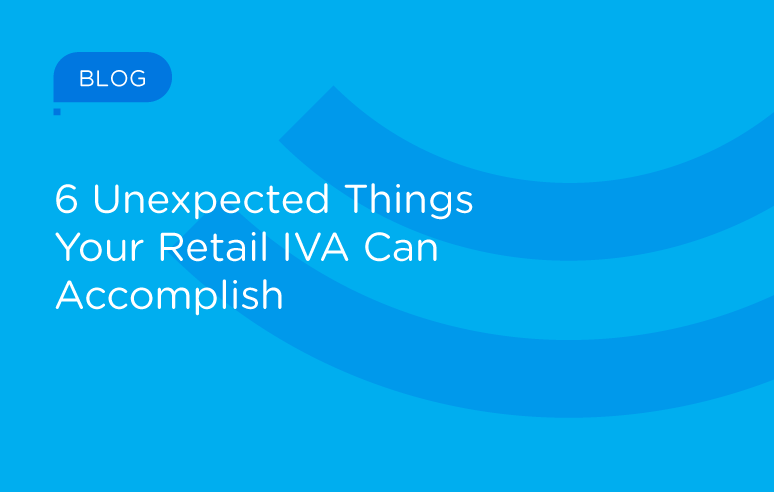Communication Service Providers (CSPs) are at the bottom of customer care ratings every year. And it’s no secret why — customers are often very vocal about their displeasure. Combine this dissatisfaction with the fact that customers have more choice than ever when it comes to these services, and it becomes easy to see why churn rates for cable providers (30%) and wireless providers (21%) are so high.
It’s important to note that when most customers call, they’re already in a state of stress. Still, there is only more frustration that awaits the customers of CSPs when they call. Here are the challenges they often face:
The Dreaded Phone Tree
The Dual Tone Multi Frequency or DTMF phone tree is a relic from the 1950s that customers still face when they call their CSP. Many customers try to navigate the convoluted call tree where still others will simply hammer the “0” key on their phone, hoping to be transferred directly to a customer service representative.
Endless Hold Times
After struggling their way through the self-service DTMF phone tree, customers are often then dumped into a call queue where they wait. And wait. And continue to wait. If customers were stressed when they called, after navigating the phone tree they’re sure to be dissatisfied now.
Sharing the Same Information—Again
After enduring the call queue, many customers report that they arrive at an agent who has no idea why they are calling—despite all the answers they’ve given to an outdated automated system. This means the customer now has to spend more time re-explaining everything to the live agent.
Obviously, the customer at this point is frustrated. They’ve called because they have an issue, and they feel their time is not valued by the CSP. This alone decreases satisfaction and drives them to competitors promising a better experience—or at the very least, a better value. A deeper look shows us there’s more going on than meets the eye.
Not only is the customer unhappy, but the CSP is wasting time and money paying for an outdated IVR system that resolves very few customer issues and acts as a barrier to getting anything done. It’s also wasting time when agents need to gather information that the customer already provided. Added to that, the live agent arrives on the line when the customer is already frustrated. The agent has to enter into a stressful situation with a full call queue and a quota of sales to hit. Needless to say, this makes it difficult for CSPs to retain agents as well as customers.
Help takes too long: Customer service lacks timeliness for CSPs
The moment that customers call, CSPs have the ability to make a big impression. Unfortunately, they hand that opportunity to old technologies like out-of-date IVRs or DTMF phone trees and then toss the customer into a call queue. Most call centers experience calls that start like this:
- Agents answer the call, have no idea what the customer needs, how long they were in IVR or what steps they took in IVR.
- The agent looks up the account with a name, account number or phone number.
- The agent authenticates the customer with either a PIN from their most recent bill or the last 4 digits of their social security number.
- The agent asks for the customer to confirm or update their email address and cell phone number—a requirement at many customer service call centers.
- At that point, the agent is finally able to ask how they can help the customer.
This process takes approximately 90-120 seconds each call. This is in addition to whatever time the customer spent on hold. At one CSP call center, the average hold time was four to six minutes. This time, plus the near 2 minute process of authenticating the customer and updating their information means the customer has been waiting nearly eight minutes before they can even share the problem on their end. This is obviously too long, and it serves as an obvious reason for why customers are leaving their CSPs.
Customer reviews: Reflect on how the customer experiences the business
Often, CSPs are so busy in their endless cycle of call queues that it’s hard to stop and see how the customer is experiencing the business. Taking a pause actually serves to be the number 1 way to improve service. Consider this:
- IVRs are there to lower costs, not help the customer—and outdated systems make this obvious to the customer.
- Customers did not call to share their information. Forcing them to update their information is only a benefit to the business—not to them.
- The authentication process, while necessary, comes when the customer has been on hold for 4-6 minutes. Why not authenticate sooner?
- And from the CSP’s perspective? They are fulfilling repetitive, transactional interactions with customers who are frustrated.
In fact, the role that is played by live agents in the industry is simply seen as an organic interface between the back office systems and the customer.
Intelligent Virtual Assistants: Cost-effective technology can aid customers and live agents
We’ve discussed the pain points CSPs are experiencing in customer retention. What is the solution? Modern Intelligent Virtual Assistants. Modern IVAs are perfect for repetitive, transactional interactions, and perhaps most importantly, they’re perfect for engaging with customers the moment they call with a “How can I help you?”—minus all the waiting.
Customers can use their own words to explain what they want to do without the assistance of phone trees. The Intelligent Virtual Assistant can then acknowledge the customer’s intent and enter into the pre-interaction process. Instead of waiting for help or navigating a phone tree, the customer can ID and authenticate themselves, allowing the IVA to make these confirmations through an ANI lookup or conversational exchange. The IVA then updates the customer’s email and wireless numbers and jumps right to the issue the customer called for. If the IVA cannot offer a solution, it can seamlessly transfer the customer to a live agent—no longer bogged down with repetitive tasks.
The best part? This can all be done by an IVA in under 2 minutes—optimizing the customer experience. In fact, the benefits are enormous for both the CSP and the customer:
- The customer saves time and frustration because he or she is greeted immediately without being subjected to phone trees or ridiculous hold times.
- Live agents spend less time on repetitive and transactional interactions and more time on revenue-generating calls or more complex issues.
- The CSPs are saving minutes on every call and create happier customers and less-stressed agents.
The benefits of a modern IVA for CSPs cannot be overstated. IVAs offer an optimized experience for the customer and offer live agents the information they need without making the customer repeat themselves. This doesn’t just enhance the live agent’s time, it also enhances the sales process. Live agents now have the time they need to up-sell the customer while solving issues—a clear win-win situation.
Ready to level up your customer care strategy? Discover how to tackle common challenges like outdated IVRs, long hold times, and repetitive interactions with the power of Intelligent Virtual Assistants. Explore our interactive tool, Game of Conversations, to see how modern technology can revolutionize your customer service experience.




